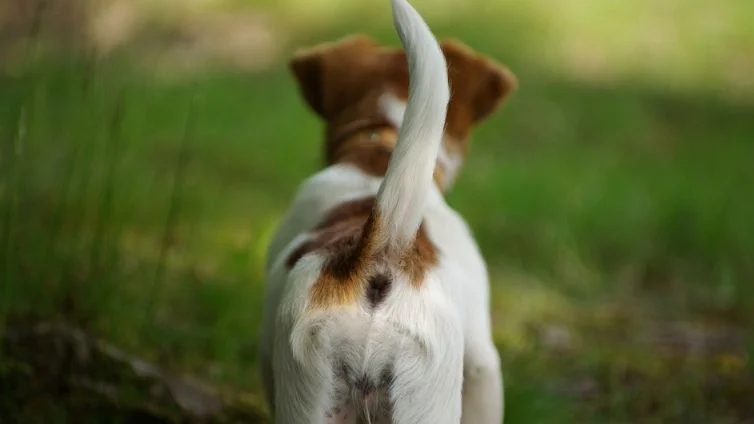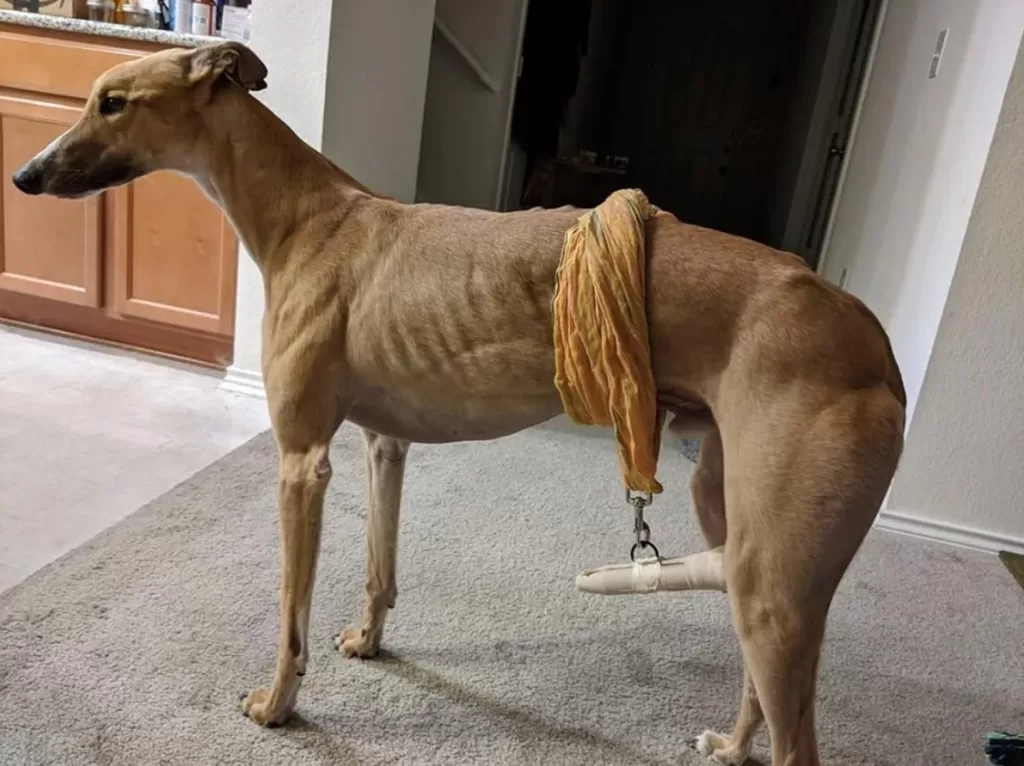Happy Tail Syndrome means a dog injuring itself by pulling its tail hard at an object. These wounds bleed all over the walls and ceilings.
This is very common in large dogs due to their size and the energy they can produce when excited.
It is more common in short-haired dogs because they do not have padding that provides fluffy fur.
What is the reason for Happy Tail Syndrome in Dogs?

The dog’s tail consists of five and 20 bone segments along the tail that make up the caudal vertebrae. In some breeds, the skin covering the tail is thinner.
When it has short hair that is shorter than its body hair, it hurts more easily. There are also many blood vessels in the tail.
Also Read: At What Age do German Shepherds Baby Teeth fall out? Complete Teeth Care
These factors can injure the tail with the size of the dog and the force with which it can show pleasure, especially when in contact with sharp-edged surfaces such as wall corners or table edges.
The blowing of all the tails does not cause injury, but when it does, regular first aid can provide relief from pain and protection from future harm.
What to do about Happy Tail Syndrome?
Assess the damage and protect the tail
First, assess the damage. Some injuries may be bad to visit an emergency veterinarian for, but only 2% of Americans have pet insurance, which can be an expensive trip.
If you are unable to see a veterinarian for any reason, wrapping the tail will improve the healing process. For someone who is not comfortable wrapping the tail, this is a good reason to visit a veterinarian.
These injuries often lead to blood loss, so those doing first aid should be confident that they will not be hurt by the injury.
Preparations for tail wrapping
Simple first aid skills promote the healing process, provide protection during healing and protect surfaces from subsequent stains. To wrap the tail, collect:
- Antibiotic ointment
- First aid roll of gauze
- Non-stick gauze pad
- Cotton wad
- First aid tape (about 1 inch wide)
- Scissors
Cut the tape strips first and set them aside so they are ready when needed. It usually requires two long pieces (about eight inches long) and six pieces about four inches long.
Another four-inch piece, cut in half four inches long, is used to hold the gauze pad.
Before starting, thoroughly clean not only the injured area but also the tail. Use lukewarm, soapy water and rinse until all the suds are gone.
- Step 1: Apply the ointment on a gauze or cotton pad – this is usually done more than trying to apply the ointment directly to the wound.
- Step 2: Wrap around the wound with the wound tape and do not close too tightly but make sure there is enough pressure to hold it in place when covering.
- Step 3: Make a lose enough gauze to go down the entire length of the tail one and a half times.
- Step 4: Start at the top where the tail meets the body. make a Wrap at the gauze strip around the tail twice to make an anchor.
- Step 5: Tie a strip of tape around the dog’s tail to keep it.
- Step 6: Continue wrapping the gauze strip around the tail in a spiral pattern, overlapping each row by a quarter of the width of the strip.
- Step 7: At the injured area, wrap the tape around the tail and secure the strip.
- Step 8: Place the cotton wad on the gauze pad and continue wrapping lengthwise around the tail to keep it in this position.
- Step 9: After the injury, place another piece of tape around the tail.
- Step 10: Finish wrapping up to the tip but do not cover the tip.
- Step 11: Add a piece of tape on top of this, overlap the first piece of tape with half the width of the tape.
- Step 12: Change this dressing as needed, but not less than daily.
Happy tail treatment by a Vet may include:
- Tying the tail (allow us to help, because it is difficult to do properly)
- Use of laser therapy treatments for faster healing
- Antibiotics if infection occurs
- Mild narcotics reduce activity and allow healing
- The use of the Elizabethan collar (cone collar) helps maintain a bandage
- In some cases the skin can be surgically closed
- Surgical amputation of the affected part of the tail if healing fails
Happy tail syndrome in dogs can try the patience of any pet owner, as well as the veterinarian who treats it. Most take over a month to heal.
Conclusion
Dogs with the happy tail syndrome can cause injury to the tails that require immediate medical attention or at least protective wrapping.
Using daily first aid kits, dog owners can provide intermediate medical care while the wound heals.
To reduce the chance of injury, look for areas where the dog gets most excited, such as the nearby gates and doors, when going for a walk.
Remove sharp-edged furnishings or fixtures or pad edges with edge and corner protectors available in the hardware store.
Happy dogs have happy tails, but when happiness becomes detrimental, wrapping a dog tail is the best defense.

